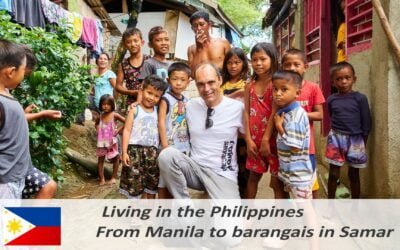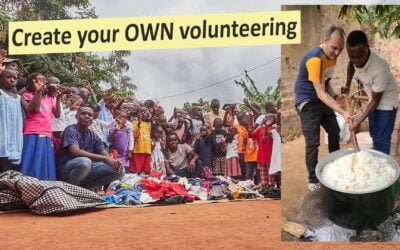Typhoon Haiyan, also known as Typhoon Yolanda, was one of the most destructive and deadly storms in the history of the Philippines. It struck the central region of the country on November 8, 2013, particularly the city of Tacloban, leaving behind a trail of devastation and tragedy. Typhoon Haiyan had a significant impact on the city of Tacloban, and its reconstruction has been a challenging and lengthy process.
Haiyan Typhoon
Typhoon Haiyan formed in the western Pacific Ocean and rapidly intensified into a Category 5 super typhoon. With sustained winds of over 300 kilometers per hour and storm surges reaching up to six meters in height, the typhoon slammed into the coast of Tacloban with unprecedented destructive force. Houses were swept away, trees were uprooted, and infrastructure was shattered. Thousands of people lost their lives, and many more were left homeless.
The initial response to the tragedy was challenging due to the magnitude of the disaster. The lack of communication and transportation hindered rescue and relief efforts. Food, water, and medical supplies quickly became scarce, further exacerbating the situation. The Philippine government, along with the international community and humanitarian organizations, mobilized to provide assistance to those affected.
Tacloban City
The city of Tacloban became the epicenter of reconstruction efforts. The early days after the disaster were chaotic, but over time, a more organized system was established. Temporary shelters were constructed, and distribution centers for food and water were set up. Search and rescue teams worked tirelessly to find people trapped under the rubble and provide them with medical care.
As weeks and months passed, attention shifted to the long-term reconstruction of Tacloban. Damage and needs assessments were conducted to identify priority areas. Rebuilding homes, infrastructure, and basic services such as electricity and clean water supply became the main goals.
The Philippine government, with support from the international community, implemented large-scale reconstruction programs. Plans were made to construct safe and disaster-resistant housing, as well as to strengthen infrastructure and early warning systems. Financial and technical support was provided to the affected individuals to help them rebuild their homes and resume their livelihoods.
The reconstruction of Tacloban also presented an opportunity to address broader challenges in terms of resilience and adaptation to climate change. Efforts were made to restore and protect coastal ecosystems, such as mangroves, which serve as natural barriers against storms. Sustainable agricultural practices were promoted, and measures were implemented to mitigate disaster risks in the future.
While significant progress has been made in the reconstruction of Tacloban, there are still pending challenges. Some people continue to live in temporary shelters and struggle to rebuild their lives. The lack of employment and economic opportunities remains a problem, hampering the city’s full recovery.
Although significant progress has been made in the reconstruction of Tacloban, there are still pending challenges that need to be addressed. Some people continue to live in temporary shelters, lacking permanent housing solutions. The task of rebuilding livelihoods and creating sustainable employment opportunities remains an ongoing concern.
Efforts have been made to revive the local economy and attract investments to Tacloban. The government has implemented initiatives to promote entrepreneurship and provide financial support to small businesses. Infrastructure projects, such as the construction of new roads and the expansion of the airport, have been undertaken to improve connectivity and facilitate trade and tourism.
The reconstruction of Tacloban has also highlighted the importance of community participation and empowerment. Local residents have been actively involved in decision-making processes and the implementation of projects. Community-based organizations and grassroots movements have played a crucial role in advocating for the needs and rights of the affected population.
Lessons learned from the reconstruction of Tacloban have also influenced national disaster management policies in the Philippines. The government has prioritized disaster risk reduction and preparedness, investing in early warning systems, and improving coordination among different agencies. Efforts have been made to strengthen the resilience of vulnerable communities and enhance their capacity to respond to future disasters.
International Movilization
Among all the fundraising movements that were initiated in those days, I wanted to highlight the one of my friend Shani Ormiston.
Climate Change
Furthermore, Tacloban’s reconstruction has emphasized the need for international cooperation and support in addressing the challenges of climate change and disaster resilience. The international community has provided financial assistance, technical expertise, and knowledge sharing to aid in the reconstruction efforts. Collaboration between local and international organizations has been crucial in implementing sustainable and inclusive development strategies.
In conclusion, the devastation caused by Typhoon Haiyan in Tacloban was immense, but the city has demonstrated resilience and determination in its reconstruction efforts. The process has been complex and demanding, requiring significant resources and long-term commitment. While challenges still remain, progress has been made in rebuilding homes, infrastructure, and livelihoods. Tacloban’s experience serves as a reminder of the importance of disaster preparedness, community engagement, and international collaboration in mitigating the impacts of natural disasters and fostering sustainable development.
We talked to the survivors of this terrible tragedy who will tell us how they lived through the typhoon, how they survived the flood and the most moving anecdotes of those days.
Share the video to reach more people and prevent this from happening again.











0 Comments